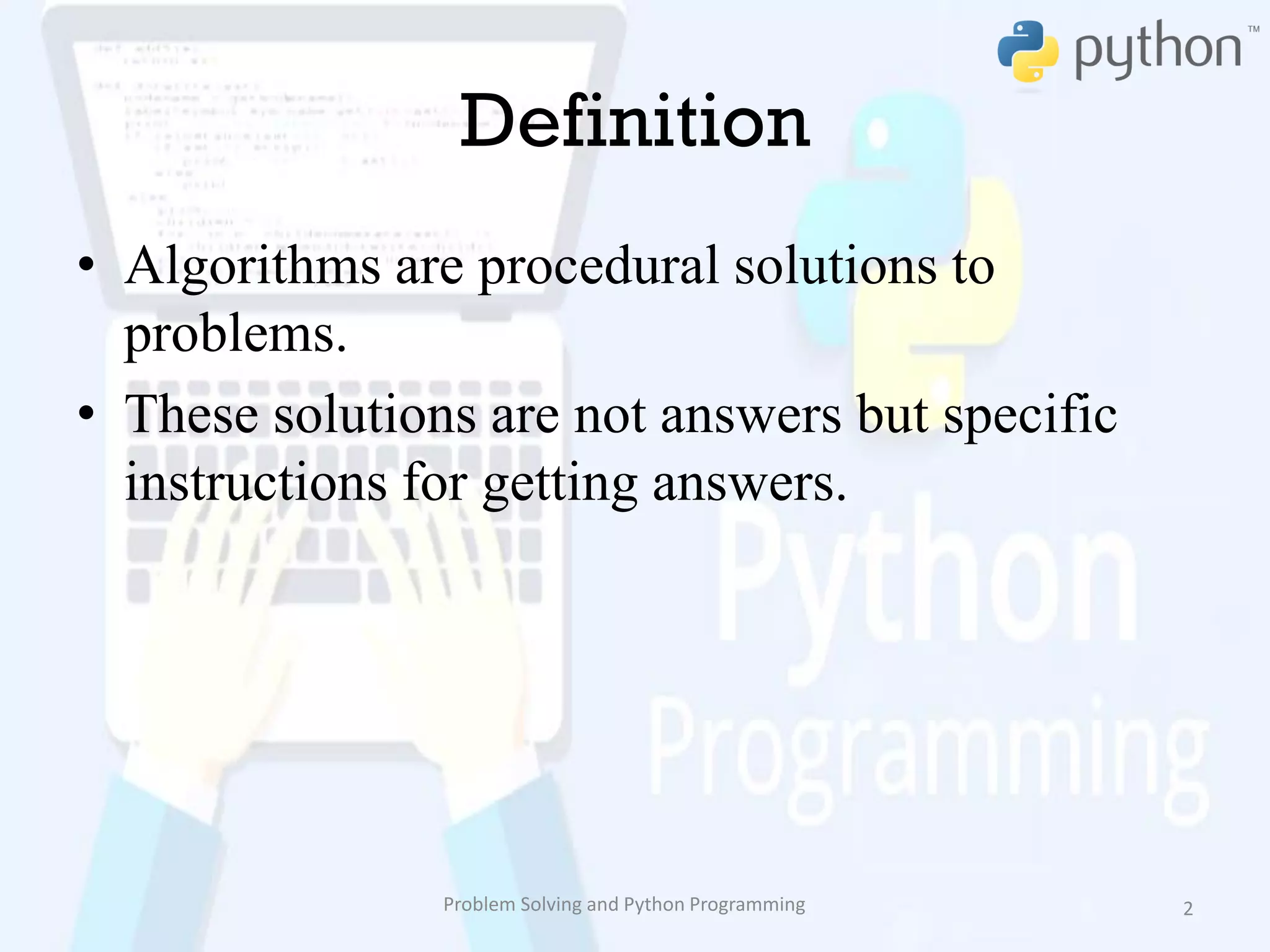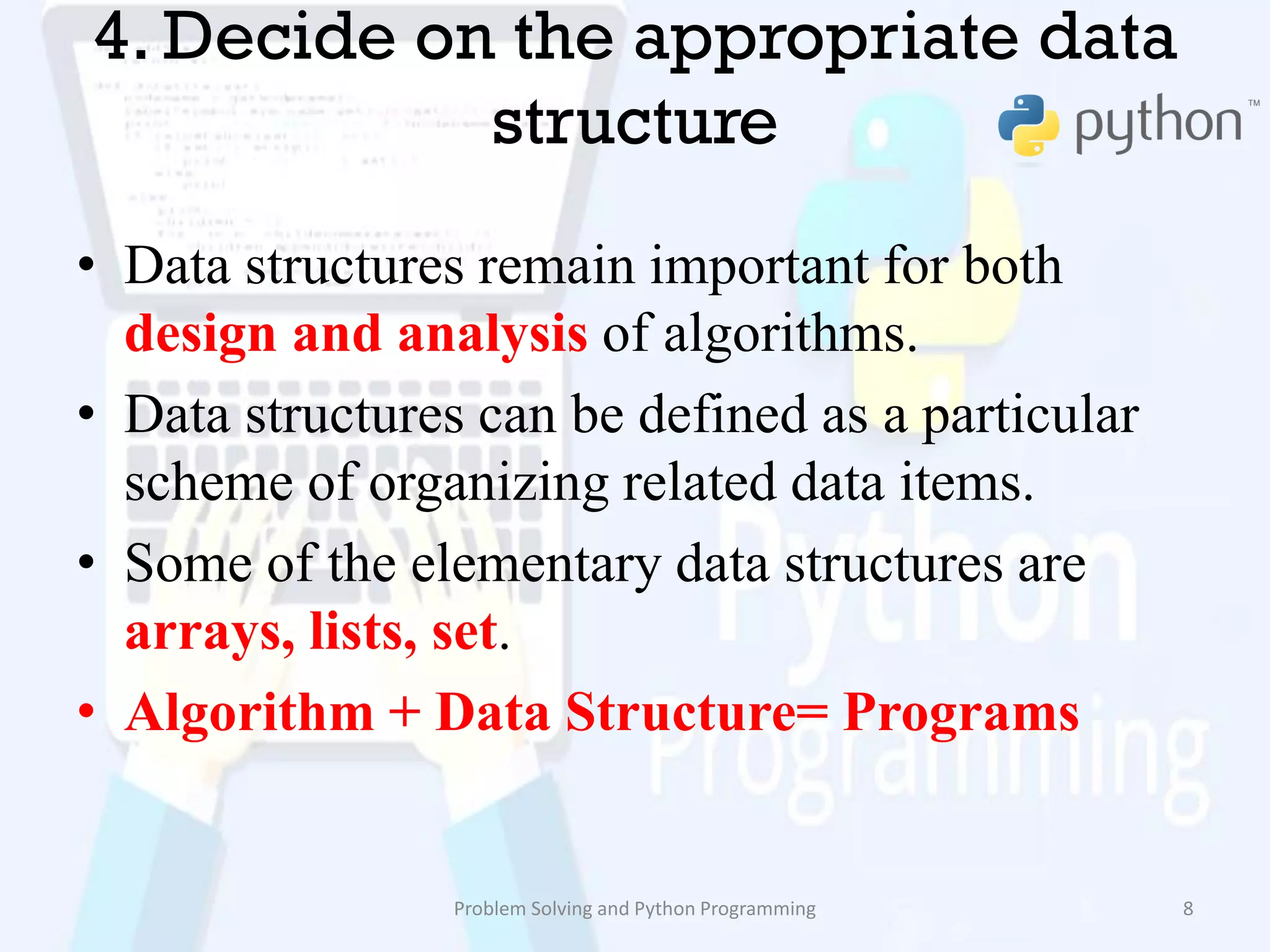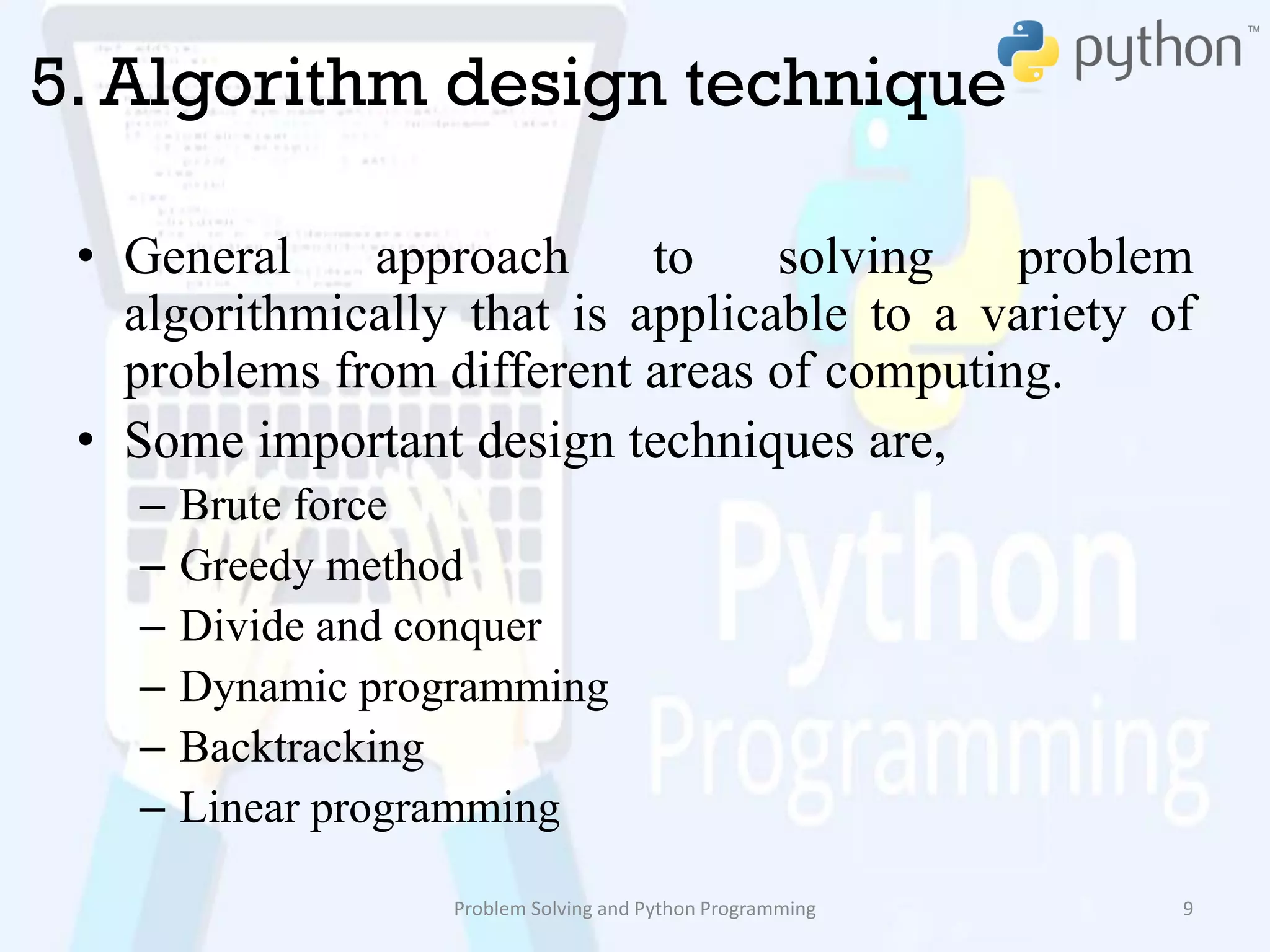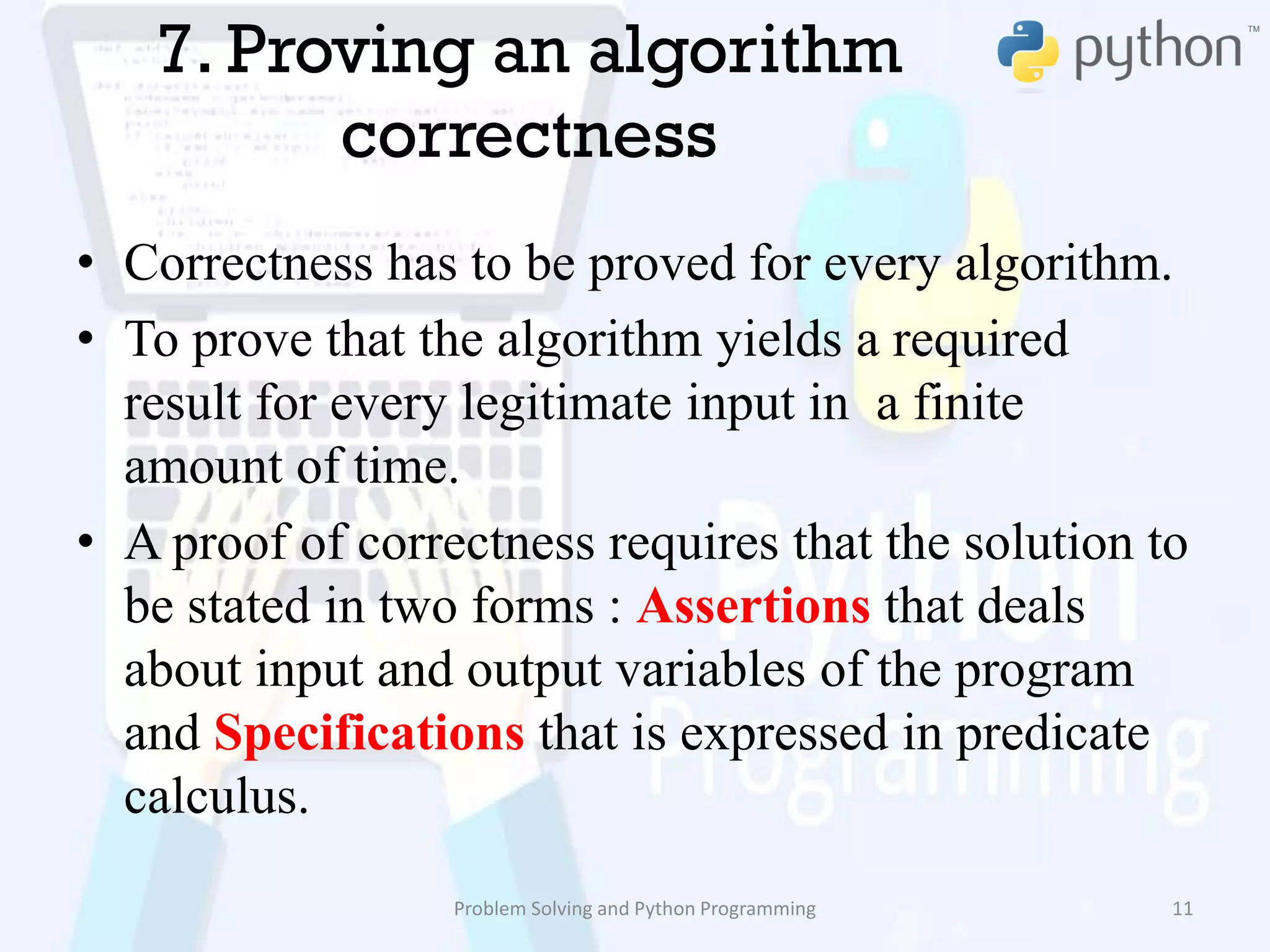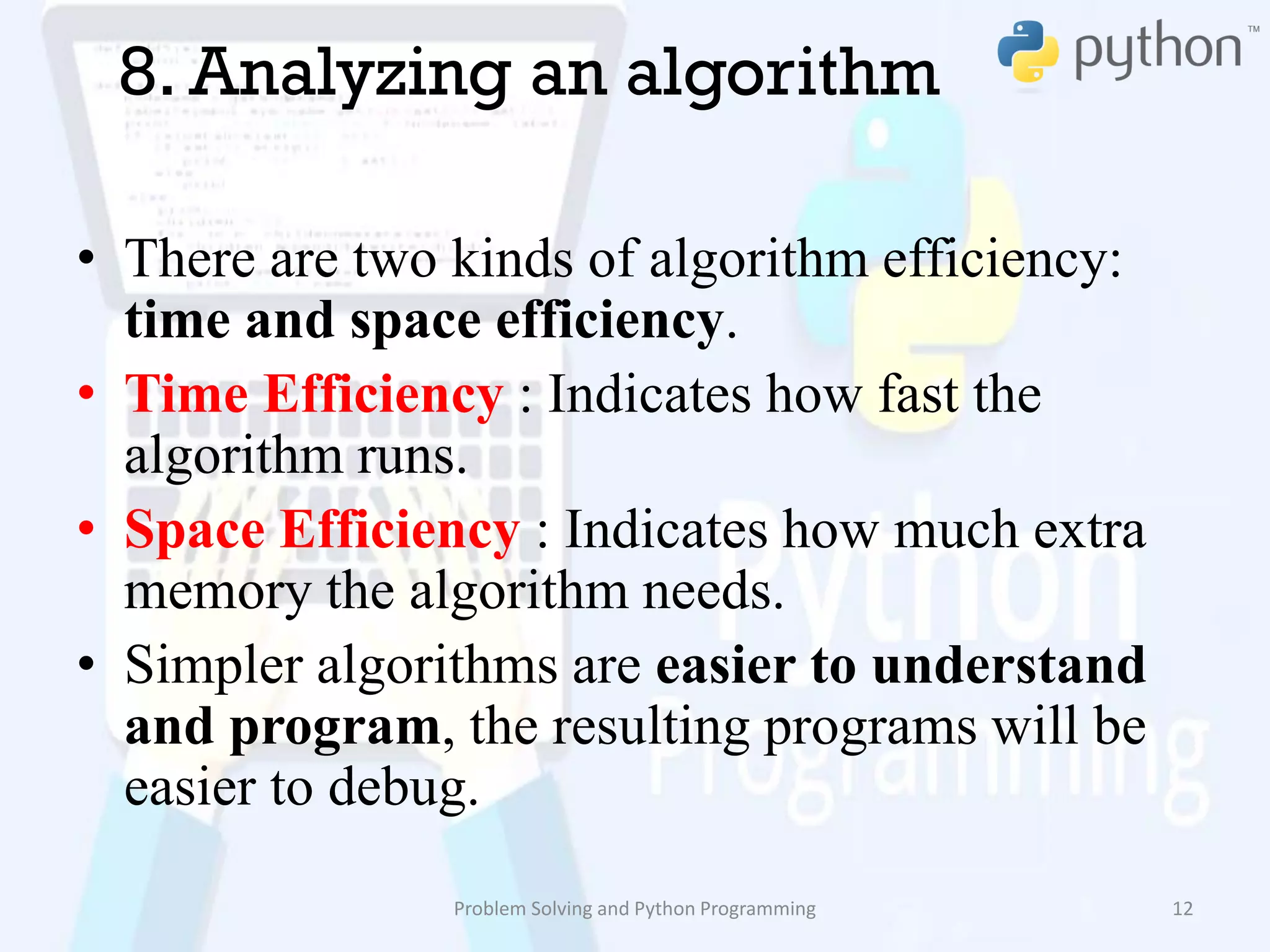This document discusses the process of algorithm design and analysis. It outlines 9 key techniques for solving problems algorithmically: 1) Understanding the problem, 2) Ascertaining computational capabilities, 3) Determining exact or approximate solutions, 4) Choosing appropriate data structures, 5) Using algorithm design techniques, 6) Specifying the algorithm, 7) Proving correctness, 8) Analyzing efficiency, and 9) Coding the algorithm. These techniques provide a systematic approach to developing procedural solutions to problems through specific instructions to obtain answers.

